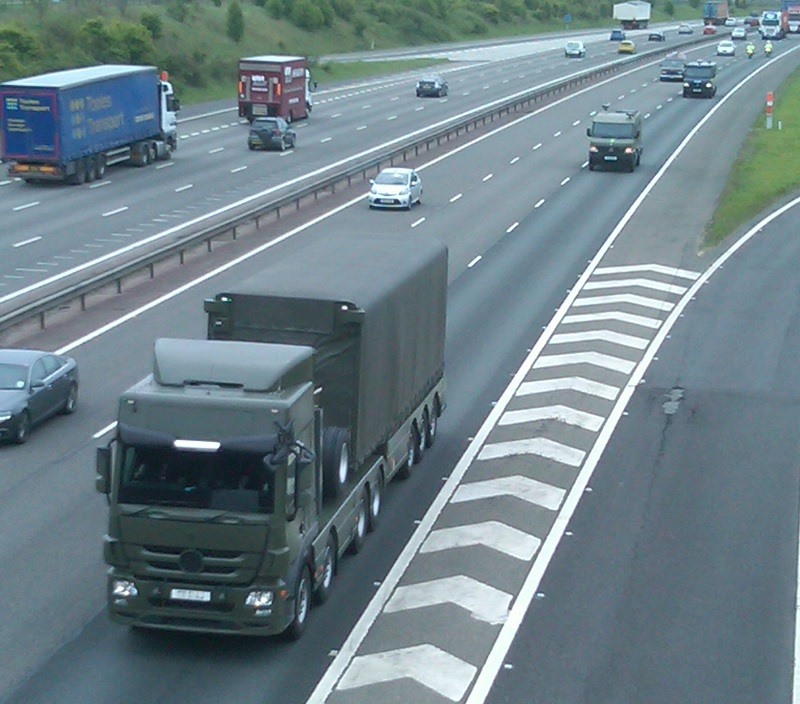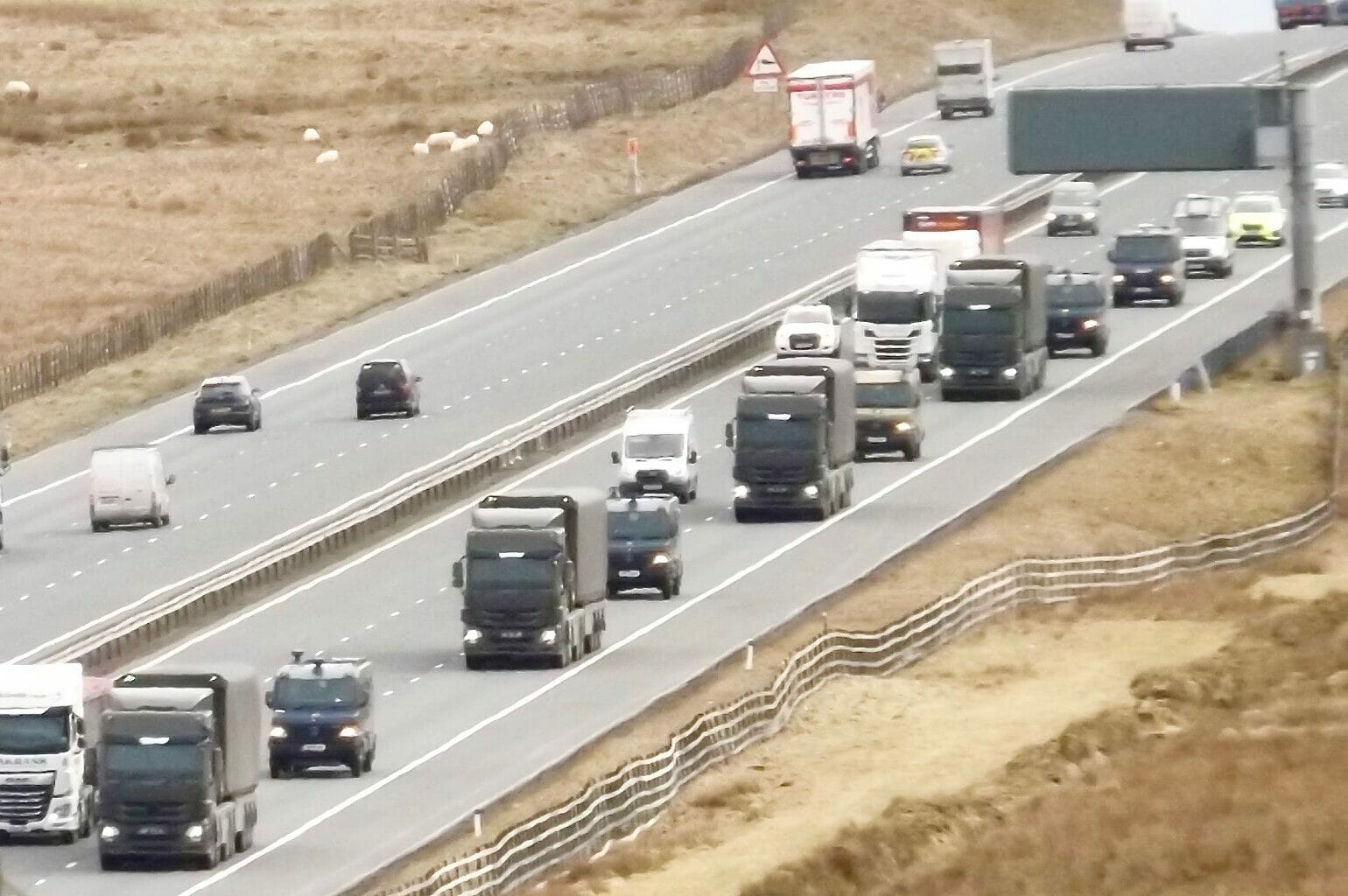An exercise testing emergency responses to a nuclear bomb convoy crashing, exploding and spreading a cloud of radioactive contamination was plagued with “errors” and “confusion”, according to official assessments by the Ministry of Defence (MoD).
There were shortages of vital medical equipment, “poor” arrangements for casualties and multiple mistakes in radiation monitoring. One set of radiation readings was wrong “by a factor of 1,000 times”.
At one point MoD firefighters ran out of water, and at another an MoD commander refused help from the civil fire service. There was no official assessment of whether or not the crash was caused by a terrorist.
There were also problems clearing up bomb debris, failures to remedy “incorrect information” and a series of communication breakdowns.
The MoD’s internal safety regulators issued 47 enforcement actions as a result of the exercise, and highlighted a further ten that were still outstanding from previous exercises. But they concluded it was an “adequate” test of the emergency arrangements.
Campaigners accused the MoD of being “poorly prepared”, and claimed its disregard for human welfare was “beyond the pale”. Radiation monitoring was a “shambles” and a real accident would bring “untold destruction”, they said.
The MoD defended the nuclear exercise as “routine”. It had been conducted “to demonstrate our preparedness to respond to any incident, no matter how unlikely,” it said.
‘Catastrophic’ nuclear accident
The exercise, codenamed Senator 2018, took place over five days in October of that year at the MoD site at Longtown, in Cumbria, near the Scottish border. It included the emergency services, local and national government.
Campaigners initially made a freedom of information request for post-mortem reports on Senator 2018 in January 2019. It took the MoD four years to respond, releasing two redacted reports in January 2023.
According to the reports, the exercise envisaged a “catastrophic” and “improbable” accident on the M6 near Carlisle involving a nuclear weapons convoy on its way north to the Clyde. The driver of a lorry travelling south was imagined to lose control, cross the central reservation between junctions 42 and 43 and crash into a nuclear warhead carrier.
This causes the “partial detonation” of a nuclear warhead’s conventional high explosive and a fire. These result in “a plume of radioactive material” which is “carried on an easterly wind towards Carlisle”.
The envisaged accident caused multiple fatalities and serious injuries, though there was “a large amount of confusion” about the numbers during the exercise. It resulted in the emergency services advising the public to stay indoors to avoid radioactive contamination.
A convoy of 20 or more vehicles transports nuclear warheads between the Burghfield nuclear weapons factory, in Berkshire, and the Royal Navy’s armaments depot at Coulport on Loch Long, Scotland, at least six times a year. The warheads require regular maintenance.
The Ferret revealed in January that the convoy had logged 40 safety incidents in the last three years, including two crashes, brake faults, breakdowns and power losses. We also reported in 2016 how mistakes in earlier nuclear bomb exercises could have led to “avoidable deaths”.
It was unclear who was in overall control of the radiation monitoring support.
Ministry of Defence report
One of the reports is a 50-page post-mortem of Senator 2018 by its MoD director, who is not named. The other is a 42-page report from the MoD’s two watchdogs, the Defence Nuclear Safety Regulator and the Defence Nuclear Security Regulator. Both were marked “official sensitive”.
The two reports provided detailed assessments of what went right, and what went wrong, during Senator 2018. They concluded that “overall Senator was an adequate test of the emergency arrangements” but highlighted multiple issues that arose.
One was that nuclear convoy vehicles didn’t have enough bags of medical equipment for dealing with injuries. “Only two contained full medical bags,” said MoD regulators, suggesting this could be “due to a lack of appropriate funding”.
Convoy crews complained that they lacked training in how to assess the urgency of injuries. Shortages of masks to prevent the inhalation of radioactive particles “meant some of the casualties did not receive a mask”.
Injured people were left unattended at the edge of a cordon around the crash. “This resulted in a poor handover of casualties with little detail on casualty condition or treatment being passed to the ambulance service,” said regulators.
Radiation monitoring errors included an air sampler that hadn’t been calibrated, wrong-sized filter papers and “confusion” over radiation units. “One set of points was plotted incorrectly by a factor of 1,000 times,” observed regulators.
Radiation monitoring teams were said to be “clearly inexperienced”, protocols were not followed and some places left unmonitored. “It was unclear who was in overall control of the radiation monitoring support,” regulators concluded.
The convoy fire crew ran out of water after 40 minutes because back-up supplies from the Cumbrian fire service were delayed by blocked roads. After the fire was put out, the Cumbrian service offered to help rescue casualties, but this was rejected by the convoy crew commander.
“Post exercise comments suggest the offer should not have been declined,” reported MoD regulators.

The failure to assess whether the imagined crash was an act of terrorism had been previously highlighted in a 2017 exercise called Astral Climb. As a result regulators repeated and toughened their enforcement action demanding this be remedied.
“There is no clearly defined process to determine the cause of an incident and specifically it is not clear who is responsible for making the assessment of whether an incident is initiated by an accident or malicious act,” they cautioned.
Identifying, moving and disposing of bomb debris scattered by the explosion was delayed. Differing procedures used by bomb disposal units run by the army and the Atomic Weapons Establishment resulted in “confusions over whose process should be followed”, said the exercise director.
Military commanders used “imprecise language”, and an assurance that there was “no risk” of radiation release after the fire was put out was “made prematurely”, according to MoD regulators. “Incorrect information was not always corrected quickly enough.”
Communication “difficulties” were caused by “poorer than expected” mobile coverage and wifi “capacity issues”. At times scientific advisers “struggled to provide sufficient clarity, guidance, and direction,” reported the exercise director.
‘Sense of dread’ on nuclear accident risk
Nukewatch, which monitors nuclear bomb convoys, argued that Senator 2018 illustrated how the emergency services struggled to cope. “These rehearsals show just how complex and damaging a nuclear weapons emergency could be, and how poorly prepared the MoD is,” said the campaign group’s Jane Tallents.
“The response teams lacked all the medical equipment they needed and had not always been trained to deal with conditions at the scene of the accident. Radiation monitoring was a shambles, and basic errors were made in measures to prevent the spread of contamination.”
The Scottish Campaign for Nuclear Disarmament pointed out that previous exercises had revealed similar communication problems. “When you add in the fact that this dangerous traffic is to maintain a horrific and illegal weapon of mass destruction, the carelessness and disregard for human welfare is beyond the pale,” said the campaign’s Janet Fenton.
“The public have a right to know about the serious risks. We should not have to wait four years for this information to be squeezed out of the MoD.”
The SNP MP for West Dunbartonshire, Martin Docherty-Hughes, suggested that accidents like that in the exercise could not be ruled out. “The idea that a plume of radioactive material could be floating across Clydebank, Dumbarton or the Vale of Leven leaves me with a sense of dread,” he said.
Green MSP Maggie Chapman said: “The kind of accident that is envisaged in this scenario would bring untold destruction and have an utterly devastating impact on the local communities that live in the shadow of the death zone.”
The Ministry of Defence declined to answer questions on the current status of the 47 enforcement actions resulting from Senator 2018 or the ten from previous exercises. It also wouldn’t say what nuclear exercises have taken place since 2018.
“As required by UK legislation and Ministry of Defence policy, we have a wide ranging and planned programme of defence nuclear emergency exercises and demonstrations, including for the transportation of defence nuclear material,” an MoD spokesperson told The Ferret.
“Routine exercises such as Senator 2018 are conducted regularly to demonstrate our preparedness to respond to any incident, no matter how unlikely.”
The two reports released by the Ministry of Defence
Cover image thanks to Nukewatch. This story was also published in The Sunday Post.















As ever, The Elite continue to use HMP Plague Island for its own purposes, that is to use the citizens as a slave colony and to hell with the consequences of their actions, be it: transporting nuclear warheads, cutting fire crews at Faslane, using nuclear submarines that need to be binned not upgraded and who the hell are The Conservative & Fascist Party going to use American nuclear warheads against? CCCP and China combined have enough warheads to destroy the planet, let alone the stash that: America, France, India, Pakistan and the Zionist invaders in Palestine have.
I agree with your sentiments/comment but you must take care of your health as your stress levels must be really raised judging by the way you express them. Take care.